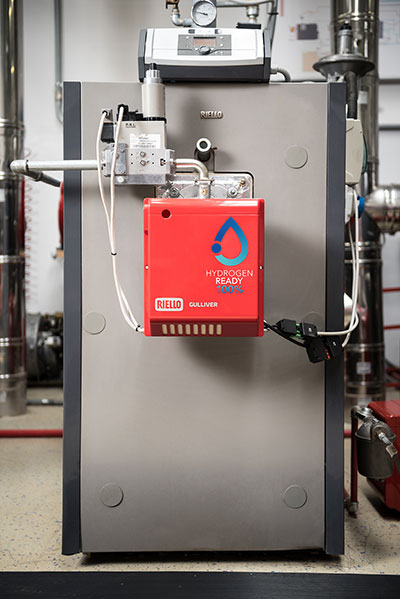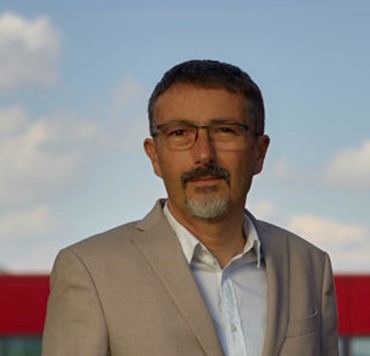What Riello offers
Back in 2019, Riello launched an ambitious project to develop a range of burners and forced draught boilers (condensing boilers combined with burners) specifically developed in order to operate safely and highly efficiently with green hydrogen.
The company carried out tests at the Combustion Research Centre in Angiari on a range of forced draught boiler condensing thermal units that are 100% fuelled by hydrogen, obtaining excellent results both with regard to the disappearance of carbon oxides in the flue gases (CO-CO2) and in terms of the very high energy efficiency achieved.
It also supplied six dual-stage low NOx burners powered 100% by hydrogen for the 'Hy4Heat' programme, a research project sponsored by the British government on the use of hydrogen in residential and commercial buildings and in gas appliances, with a view to establishing how this resource could be used in different communities.
Thanks to the significant results achieved, the new Riello 100% hydrogen-powered boilers are now under development, with a view to reaching up to 3 MW, and to being used in experimental applications with commercial and industrial partners.
“Riello is ready to embrace the challenge posed by energy transition, accompanying customers through this delicate phase through the research and development of solutions that can satisfy a wide range of application requirements.” Visonà adds a further comment: “This is an urgent commitment that the hard-to-abate industrial and process sectors must make, and for which there does not exist just one, single path to be followed. We believe that it is essential to offer a portfolio of different technologies that can meet the specific needs of industrial processes, which differ so widely from one another. As such”, he concludes “energy efficiency, the circular economy, green fuels (hydrogen and biofuels) and electrification all represent complementary elements of a joint, integrated action plan that will help to reduce emissions in both the short and medium term.”
 International
International
 België/Belgique (Belgium)
België/Belgique (Belgium)
 Canada
Canada
 中国 (China)
中国 (China)
 Hrvatska (Croatia)
Hrvatska (Croatia)
 Česká Republika (Czech Republic)
Česká Republika (Czech Republic)
 France (France)
France (France)
 Deutschland (Germany)
Deutschland (Germany)
 Magyarország (Hungary)
Magyarország (Hungary)
 Italia (Italy)
Italia (Italy)
 Latvija (Latvia)
Latvija (Latvia)
 Polska (Poland)
Polska (Poland)  România (Romania)
România (Romania)
 España (Spain)
España (Spain)
 Slovenija (Slovenia)
Slovenija (Slovenia)
 United Kingdom
United Kingdom
 United States
United States
